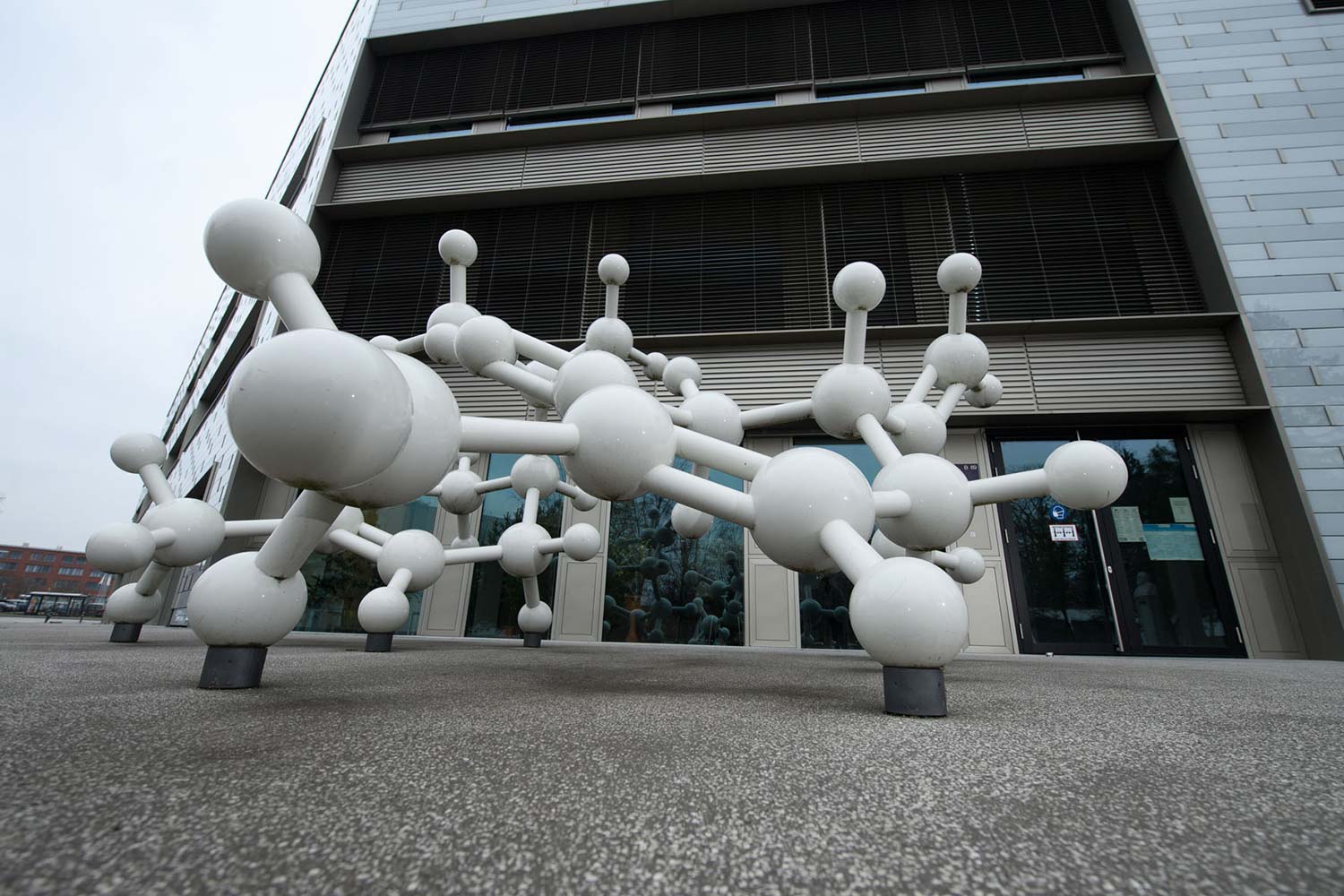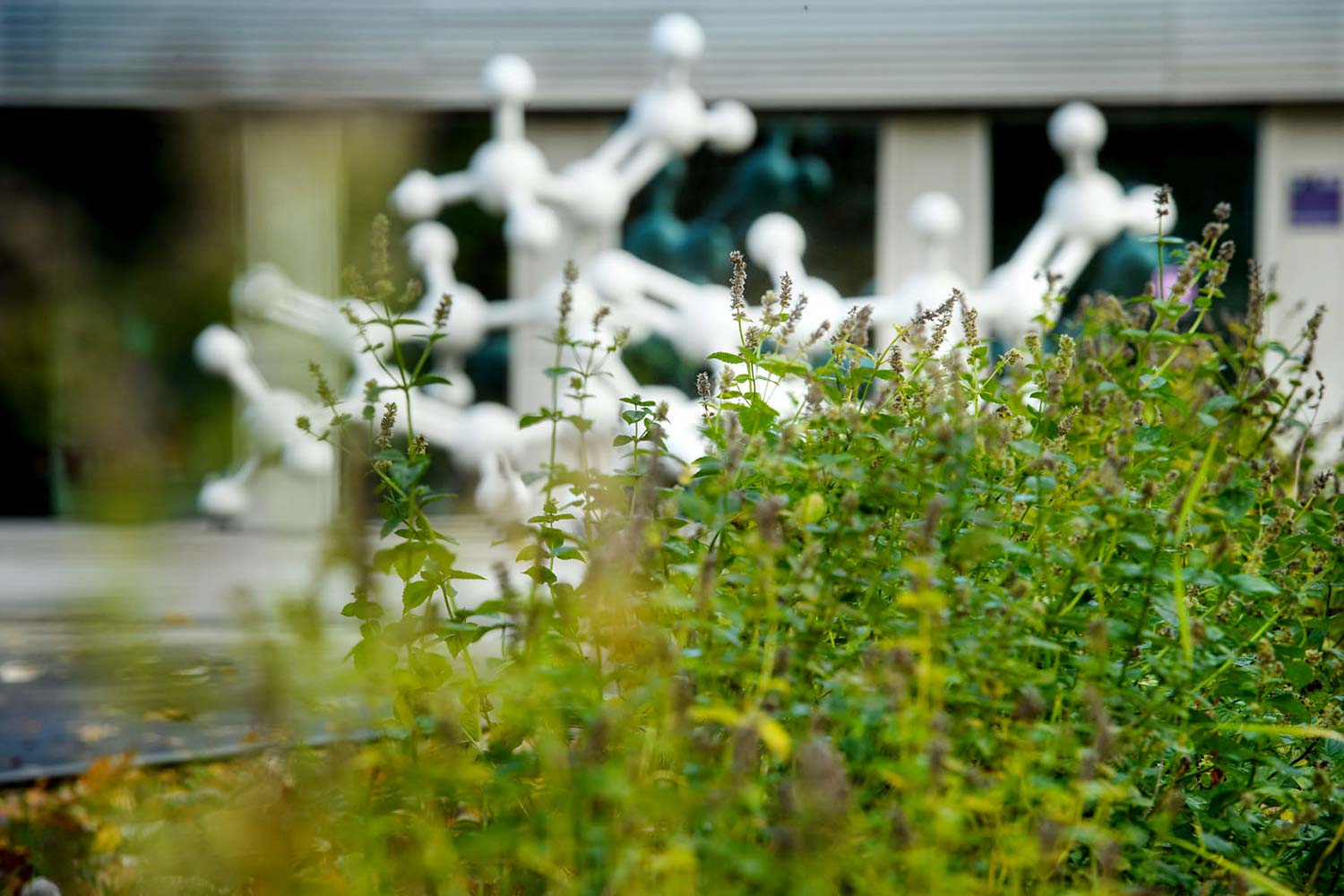17Chiralität
Ulrike Mohr
2015, Metal, Plastic, Caraway and Mint Plants

In front of the last building on campus can be seen two large sculptures made of white pipes and balls: ”Chiralität” (Chirality), by the sculptor Ulrike Mohr.
Mohr was born in Tuttlingen in 1970. She studied art and sculpture at the Conservatory of Art in Berlin-Weissensee, where she currently holds one of her teaching positions. Her works appear in many solo and group exhibitions in Germany and abroad, and she has earned numerous prizes and fellowships. Mohr lives and works in Berlin.
Her work begins with studies of nature and incorporates various materials. Alongside the substances themselves, she is interested primarily in processes of transformation. The work on display, produced as part of the ”Kunst am Bau” project, is based on the theme of handedness – chirality. The two pieces are based on models of the structure of a molecule called Carvone. As in the sculpture, nature produces mirror-image versions of carvone – they are chirals. In spite of the fact that they consist of identical components, these two versions smell very different to humans: (S)-(+)-Carvone produces a smell like cumin, while the mirror-image form (R)-(-)-Carvone smells like mint. This theme carries over into the long, narrow garden beds on the other side of the street, where the artist planted various sorts of cumin and mint plants. Both have a long tradition of use in medicine and as spices – a connection to the research and clinical work that takes place on campus.

The sculpture makes reference to the spatial dimension of chemical reactions. It is not simply the sum of elements that make up the carvone molecule that give it a particular smell – because at that level, both forms are identical. Instead, smell receptors in our sinuses respond to the spatial arrangement of the molecules and produce different signals. Here Mohr‘s work can be seen as a reference to the multidimensionality of natural interactions.
The chirality of signaling molecules has a direct impact on human health, which creates a direct connection between the sculpture and the health research on campus. One form of a chiral molecule can ease the symptoms of a disease, which the other may cause it. Perhaps the best known example of this is the molecule thalidomide: one form can help relieve sleep disturbances; the other can produce developmental defects in newborns. In the 1960s and 70s this led to the Thalidomide scandal. Thus Mohr‘s piece can also be seen as a warning – that for science it is essential, literally, to take ”both sides” into account.
The sculpture was constructed with the help of public funds known as ”Kunst am Bau” for the promotion of art and architecture.
You can find an interview with Ulrike Mohr here.